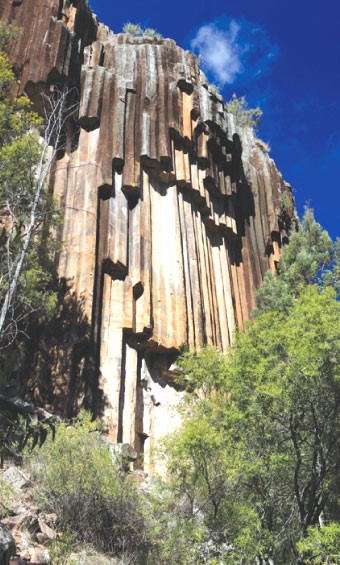Back
Sawn Rocks - Mt Kaputar National Park
锯石——卡普塔山国家公园

Sawn Rocks in Mt Kaputar National Park
卡普塔山国家公园锯石
the 40m high cliff face is the sheared off remains of a basalt lava flow from the Nandewar Volcano which dominated the area 21 mya. The columnar fractures are a result of the cooling process. The basalt cools from the outside toward the centre, causing shrinkage cracks to form, commonly in a hexagonal pattern. The shape of the columns is attributed to the tensional stress. When the molten rock within the basalt lava flow cooled slowly and, importantly, evenly, this enabled the individual crystals within the molten rock to align perfectly with each other. It is exceptionally rare to find columns so perfectly formed and preserved and Sawn Rocks near Narrabri is recognised as one of the best examples of columnar jointing in Australia.
在两千一百万年前,南德瓦火山较为活跃,它喷发出的玄武岩熔岩流在冷却过程中形成了柱状断裂,形成了今天锯石40米高的悬崖切面。玄武岩从外部向中心冷却,由于拉应力,形成通常呈六边形的收缩裂缝。当玄武岩熔岩流中的熔融岩石缓慢冷却,尤其是均匀冷却时,熔融岩石中的单个晶体之间就能够形成完美的平行结构。形状完美、保存完好的石柱是极为罕见的,而纳拉布里附近的锯石被认为是澳大利亚最典型的柱状节理之一。

